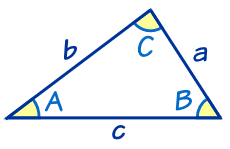Inquiry Activity Summary:
Today in class we were given a square and an equilateral triangle both having a side length of 1 and we were to explain the thought process step by step in order to be able and literally know how and why the special right triangles have their constants and basically where they come from. Now, for the 45-45-90 triangle we were given the square that had a length of 1 while for the 30-60-90 triangle we were given the equilateral triangle with a length of 1 and from there we were to completely derive it and see how you get n, n, n radical 2 for the 45 degree one and n, n radical 3, and 2n. Okay so although it seems like we know nothing and we feel like we cannot figure out..we can step by step.
1. Okay so beginning with the square that we were given for the 45 degree special triangle, we can automatically label all four sides with a 1 since we know that a square is all equal in sides and the directions did say that the square contained a side length of 1. Now, we can bisect the square diagonally of course because if we did it vertically it will not create a triangle, but a rectangle. Then, it only gets easier and this is why, we know that two sides are equaled to 1 and so in order to find the third side we can use the wonderful ...PYTHAGOREAN THEOREM! After solving it by using a^2+b^2=c^2 we should get c= radical 2. Okay now I know what you are thinking well then where does the n come from and well truth is n is just used as a constant it really isn't anything else but a constant/variable like x could be. So we could label all three sides of the right triangle as n like any variable and then we find that the sides conclude to being n, n, and n radical 2. The reason we use n is to that we can see the relationship with all sides and so we can see the possible numbers that could be interchangeable. There is a visual below so that it can be easier in understanding and seeing a picture may clear confusions.


2. Okay so now for the 30-60-90 triangle we are given an equilateral triangle of which we all know has three angles that are 60 degrees. We can begin by labeling the three sides with one since the directions as well told us that there was a side length equal to 1. In order to have it become a right triangle we simply bisect it vertically and the reason is considering that we will get a 90 degree, a 30, and a 60 degree like shown below. By cutting it so, it basically creates out special triangle with the wanted angles. Now, by just focusing on the triangle we want we can see that the bottom becomes 1/2 after bisecting it, while the hypotenuse still is 1, and now what about the height? Well, we can use the Pythagorean Theorem again and after plugging in and solving, we should get b= radical 3/2. Okay so now we have 1, radical 3/2, and 1/2, yet we are not done. After, we can do some more solving by multiplying by 2. This is so because well 1/2 times 2 gives us one and that is what we originally had, yet now we have to do it to all sides. Next, once we multiply we should get 2 for the hypotenuse, 1 for the bottom horizontal line and lastly radical 3 for the height. Now, almost finishing, where the heck does the n mean and why does it fit in? Well, n is just a constant of which we use to compare the sides and it basically represents the different number values. Now, after we label all sides with the n as simply a variable we end up getting n, n radical 3, and 2n. The figures below help much visually when it comes to understanding.


Inquiry Activity Reflection:
1. "Something I never noticed before about special right triangles is that they can appear and simply pop out of no where and especially out of other shapes."
2. "Being able to derive these patterns myself aids in my learning because I can actually see what I am learning and exactly where this comes from that this didn't just appear form thin air."
















